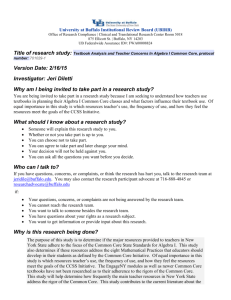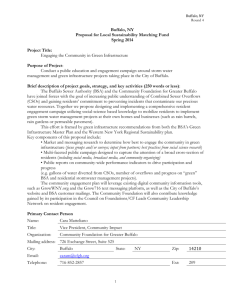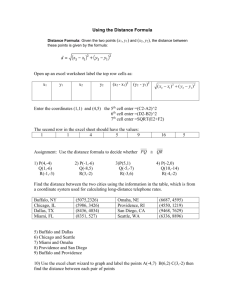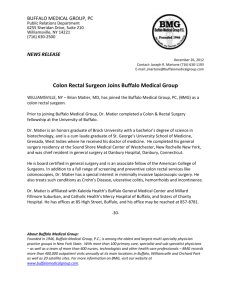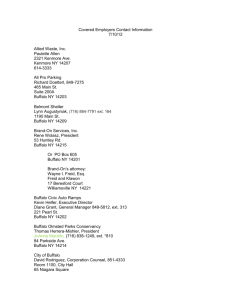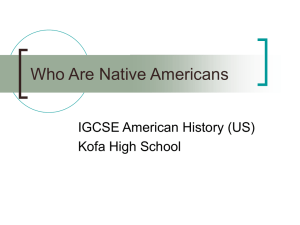Eating - One Job, Four Stomachs!
advertisement
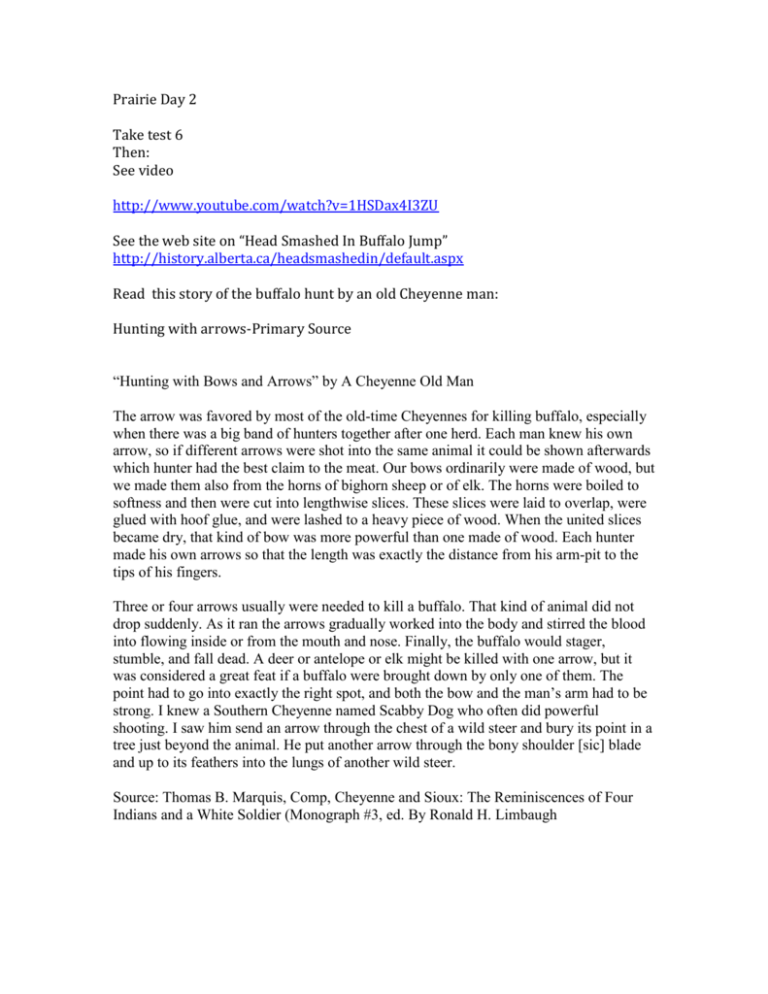
Prairie Day 2 Take test 6 Then: See video http://www.youtube.com/watch?v=1HSDax4I3ZU See the web site on “Head Smashed In Buffalo Jump” http://history.alberta.ca/headsmashedin/default.aspx Read this story of the buffalo hunt by an old Cheyenne man: Hunting with arrows-Primary Source “Hunting with Bows and Arrows” by A Cheyenne Old Man The arrow was favored by most of the old-time Cheyennes for killing buffalo, especially when there was a big band of hunters together after one herd. Each man knew his own arrow, so if different arrows were shot into the same animal it could be shown afterwards which hunter had the best claim to the meat. Our bows ordinarily were made of wood, but we made them also from the horns of bighorn sheep or of elk. The horns were boiled to softness and then were cut into lengthwise slices. These slices were laid to overlap, were glued with hoof glue, and were lashed to a heavy piece of wood. When the united slices became dry, that kind of bow was more powerful than one made of wood. Each hunter made his own arrows so that the length was exactly the distance from his arm-pit to the tips of his fingers. Three or four arrows usually were needed to kill a buffalo. That kind of animal did not drop suddenly. As it ran the arrows gradually worked into the body and stirred the blood into flowing inside or from the mouth and nose. Finally, the buffalo would stager, stumble, and fall dead. A deer or antelope or elk might be killed with one arrow, but it was considered a great feat if a buffalo were brought down by only one of them. The point had to go into exactly the right spot, and both the bow and the man’s arm had to be strong. I knew a Southern Cheyenne named Scabby Dog who often did powerful shooting. I saw him send an arrow through the chest of a wild steer and bury its point in a tree just beyond the animal. He put another arrow through the bony shoulder [sic] blade and up to its feathers into the lungs of another wild steer. Source: Thomas B. Marquis, Comp, Cheyenne and Sioux: The Reminiscences of Four Indians and a White Soldier (Monograph #3, ed. By Ronald H. Limbaugh Bison are commonly called buffalo. They are the biggest land animal in North America. In the winter, the bulls stay in one group and the cows and calves in another. They migrate to better pasture. In the spring they move back to the summer range. Their heavy coats molt off. The bulls are still separate because calves are born in the spring. (275 days gestation)They look light brown and have no hump to aid in birthing. The bone in their hump can be a foot tall when full grown! It’s purpose, along with huge shoulders and neck muscles, is to hold up their massive heads. In the summer the bulls and cows join for mating season. The fall is a time for lots of eating and growing the winter coat of hair. By November the bulls have left the herd. A full grown buffalo can jump vertically 6 feet and horizontally 7 feet. It can run for some distance at 35 miles per hour. Their massive heads can push through 4 ft snow drifts in order to get at grass. Bison eat by sticking out their tongue and wrapping it around the grass. They pull it into their mouth and use their bottom teeth against the upper jaw to cut it off. As they eat they constantly walking. They have 4 stomachs and chew cud like a cow. (30 lbs per day-90% grass) They love to wallow which is rolling around on their backs from side to side. They use the same wallow spots for generations. Making patches in the prairie is important to the ecosystem. The male calves live with their mothers until their 3rd year. Then the big bull runs them off and they join the bachelor group. Only the dominant bull is allowed with the herd. They fight for that right. Because of this the males lifespan is 5 to 8 years shorter than the females who are always protected. (12-15 years but up to 30 or more if really hardy)The female calves stay with their mothers all their lives. They used to cover the central plains in the millions (up to 75 million). The Louisiana Purchase occurred in 1803 so Thomas Jefferson sent Lewis and Clark to scout the land out west. This was the beginning of the end of the world as the buffalo knew it. The report given by Lewis and Clark plus the incentives offered by the government sent white people in mobs to the new land. As they came in, the buffalo was pushed out. They were hunted for food and hides. Then they were exterminated to keep them out of crops, to make the railways safe and to get rid of the Indians who depended on them. And for just plain fun. The millions were brought down to 1000 before conservationists moved some into protection to keep them from going extinct. That’s when Yellowstone got its herd, the largest wild herd in North America. Today most of the buffalo live on ranches or in conservation areas. Some of them have been crossbred with cattle. Keeping the gene pool of wild buffalo is a main goal of places like Neil Smith Wildlife Area. The lives of the plains Indian tribes revolved around the buffalo. They followed the herd and lived in tipis so they could be mobile. Before the Spanish brought horses to America, they hunted the buffalo on foot. They either cornered them in a ravine, or they caused them to stampede over cliffs by starting fires or dressing as wolves. (show the web site of the “head smashed in” buffalo jump.) After the horses came to the Indian, they trained the horses to cut out a buffalo from the herd and get up next to it without reins. The Indian would pierce it with arrows. (read the story of the Cheyenne old man) The buffalo was not only important to daily living for the plains Indian, but also for their culture and religion. It was a symbol of life. The 2 main ways the Indians protected their stories and history were by oral story telling and through pictograms. Pictograms are signs and symbols. They were put on tipis, rugs, clothes and buffalo hides. Stories of history and folklore were recorded in pictures and symbols. They would also decorate with geometric symbols. The buffalo plays an important role in the tall grass prairie ecosystem. The bison helps distribute seed in its dung and by wallowing. The seeds carried in its fur drop out and grow in the bare dirt they cause by wallowing and grazing. Their grazing keeps grass down so the forbs (wild flowers) can grow. Their trails cause open areas in the prairie. They fertilize as they go. They are called a keystone animal in the ecosystem because what they do affects so many other organisms. The Neil Smith herd numbers between 70 and 90 animals. They are being used to re-build the population and prevent extinction. They live on 700 acres. The herd is managed for genetic diversity. They are rounded up once per year. Blood and hair samples are taken for testing and their genetics are on file. They are microchipped to tell them apart. The herd is evenly male/female and also managed for even age groups. The extra yearlings or 2 year old bison are shared around the country. But the ones with rare wild genes are kept. (See next page) What is a Ruminant? Eating - One Job, Four Stomachs! Bison eat and digest their food in a very unique way. They like to eat prairie grasses, and they have special teeth on their lower jaw that helps them clip off the grass. Bison eat grass by wrapping their tongue around it and pinching it off between their tongues and lower teeth. They swallow their food practically whole. Bison are ruminants Ruminants have stomachs made up of four compartments which help them digest food. When eaten, food is first stored in the rumen, the first compartment of the stomach. Some food goes directly to the second compartment which is the reticulum. Eventually, all the food goes to the second compartment, the reticulum. Here stomach juices and bacteria begin to break food down and form it into cud. When the bison are resting, muscles in the reticulum push the cud back up into bison's mouth. There the cud is chewed and mixed with more saliva. Then the cud is swallowed again to be further digested. It passes through the rumen, the reticulum, and into the omasum, which is the third compartment of the bison's stomach. The cud is further digested there. The final stop is the abomasum, the last of the compartments. Here, cud is combined with stomach juices before passing into the intestines. Why does it take four stomachs? The grasses, forbs (weeds), and browse (woody plants), are very tough and hard to break down. The bison's ability to use many different plant foods makes it a survivor when food (forage) is scarce.
